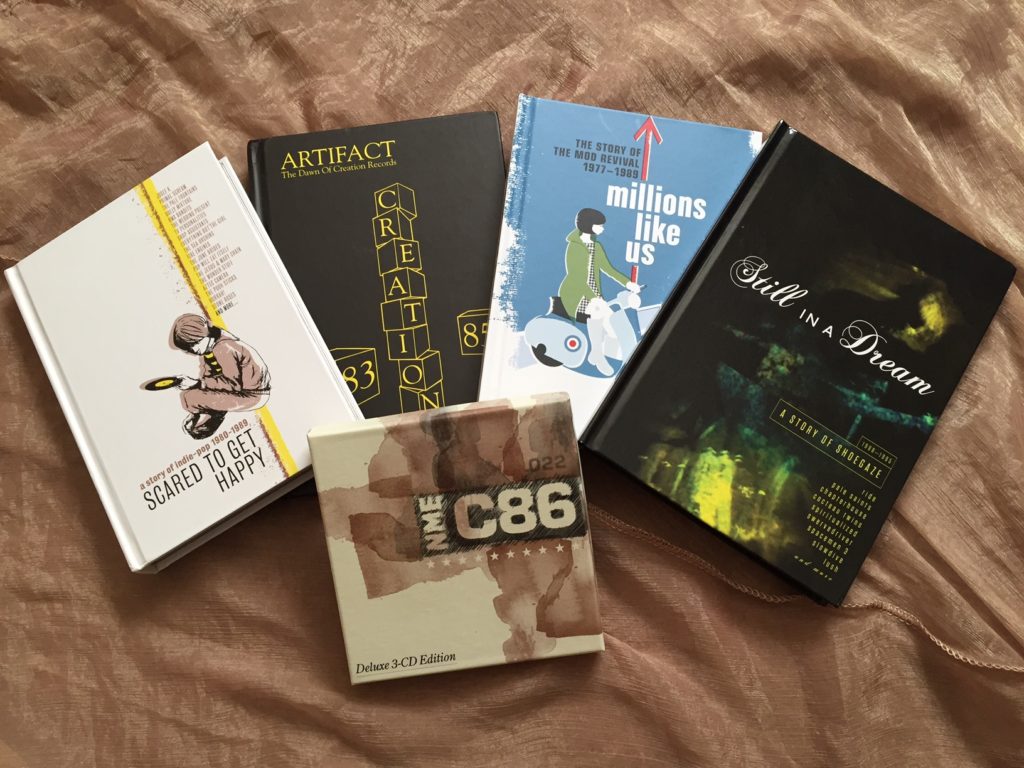
Long before Prince’s death, fans were wildly discussing if and when the vast contents of his audio library — the legendary vault — would be officially released. While former labels, associates, band members and distant relatives jockey for position as the estate ambles through probate, one can only hope they archive, release and celebrate his work as well as London’s Cherry Red Records has been doing for years in a wide variety of musical arenas.
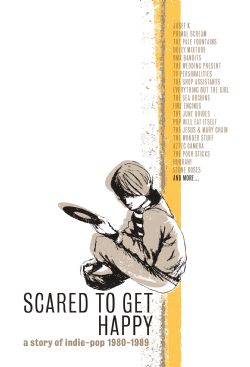 Box Sets are nothing new; from the bloated ”scrape the archives” cash-ins that just about every major artist puts under the Christmas tree to focused niche sets like Nuggets and Children of Nuggets. Cherry Red has been digging gold out of the 1970s and 1980s alternative underground they way Nuggets celebrated psychedelia. A few years ago, they released the stunning 5CD set, Scared to Get Happy: A Story of Indie Pop 1980-1989. The set brilliantly restored more than 100 tracks that in many cases were never issued on CD or digital platforms, or if they were, they weren’t prominent enough to get the proper attention in rock history that they deserved. Scared plays out like a thesis class in indie guitar rock. It will take you a full semester to fully absorb and appreciate all of the tracks and read the 56 pages of fascinating editorial.
Box Sets are nothing new; from the bloated ”scrape the archives” cash-ins that just about every major artist puts under the Christmas tree to focused niche sets like Nuggets and Children of Nuggets. Cherry Red has been digging gold out of the 1970s and 1980s alternative underground they way Nuggets celebrated psychedelia. A few years ago, they released the stunning 5CD set, Scared to Get Happy: A Story of Indie Pop 1980-1989. The set brilliantly restored more than 100 tracks that in many cases were never issued on CD or digital platforms, or if they were, they weren’t prominent enough to get the proper attention in rock history that they deserved. Scared plays out like a thesis class in indie guitar rock. It will take you a full semester to fully absorb and appreciate all of the tracks and read the 56 pages of fascinating editorial.
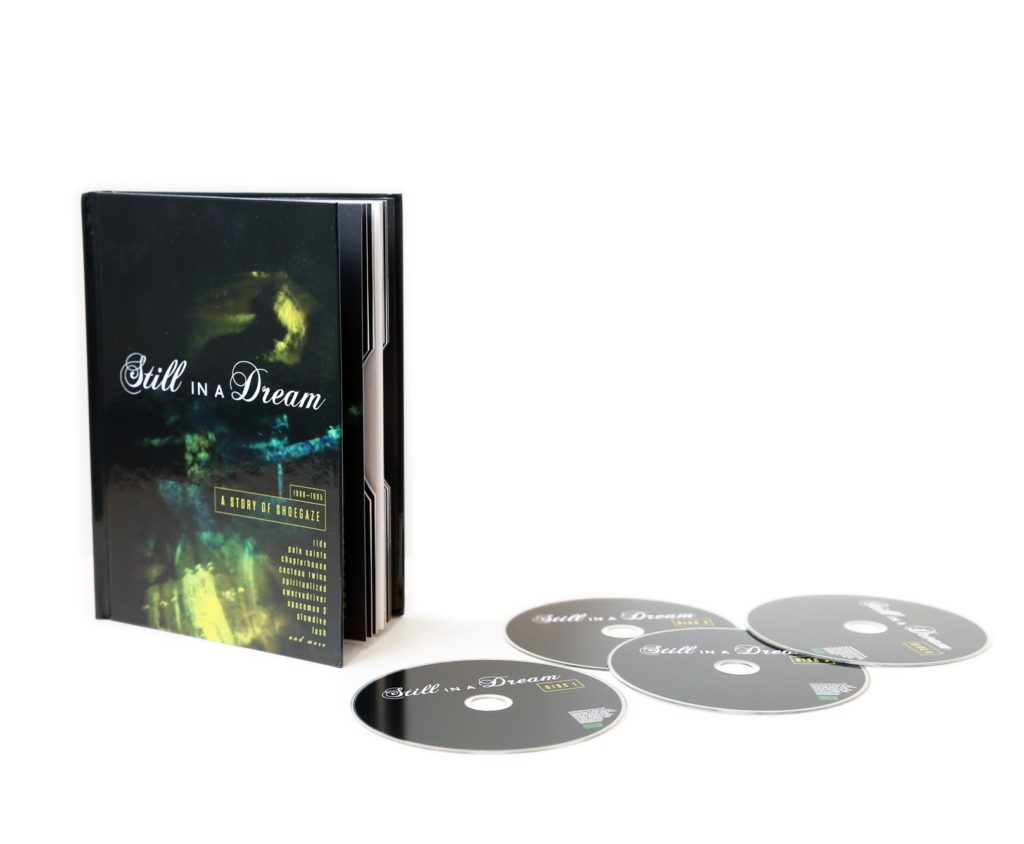
More sets quickly followed, including the long-overdue CD reissue of NME’s famed C86 cassette, imaginatively expanded to a 3CD edition; Millions Like Us: The Story of the Mod Revival: 1977-1989; and Artifact: The Dawn of Creation Records led to the perfectly timed 2016 release of Still in a Dream, a Story of Shoegaze.
On the eve of Cherry Red’s upcoming 2016 box sets, Popdose sat down with the executive producers to get a behind the scenes look as to how these incredibly detailed slabs of rock history come together.
John Reed producer of Scared, Millions and C86, is back with C87: Deluxe 3CD Box Set (due this summer), righting the wrongs of history by retroactively continuing the movement NME started 30 years ago. C87 revisits subsequent singles from many bands from C86 and adds in acts that released their first recordings in 1987, including House Of Love, The Shamen, The Darling Buds and The Inspiral Carpets. Reed’s most recent box set, Still in a Dream: The Story of Shoegaze was released earlier this year just in time for Lush’s triumphant return to the musical scene.

Richard Anderson is the producer of just-released Close to the Noise Floor, a 61-track, 4CD set that chronicles the history of UK electronica from 1977 to 1984. Over four hours of music that still sounds futuristic to this day, artists like 100% Manmade Fibre, Spoon Fazer, British Standard Unit, Five Times Of Dust and Zorch sit comfortably alongside early forays by familiar names — Blancmange, The Human League, OMD and Throbbing Gristle.
DISC ONE: INSPIRATION
POPDOSE: The subject areas for each box set seems so incredibly focused, yet the contents are so deep and diverse. Where did the ideas for your respective box sets come from?
JOHN REED: In 2012, I started working on Scared To Get Happy, which tried to tell the story of 80s Indie Pop in the UK. This 5-CD box set was released in 2013 and won an award and attracted lots of positive reviews. It sold well, too, so a sequel was inevitable and was always going to follow STGH chronologically, which takes us into the early 90s. Meanwhile, some of our reissues by the likes of Slowdive fared surprisingly well. And we’d spotted the widespread level of interest and resurgence in Shoegaze as a genre. So Still in a Dream seemed logical, really, plus it was a style of music I loved at the time.

Those Little Aliens (Courtesy off Ian Dobson) from Close to the Noise Floor
ANDERSON: I’ve been listening to a lot of electronic music since my teens in the early 1990s, and also studied Music Production in the late 90s and came into contact with a lot of very early electronic experimental music there — stuff from the period immediately post WWII when army surplus equipment began to find its way into creative hands. Slowly it dawned on me there was a gap in the story, so to speak. I didn’t really know anything about the development of electronic music as it mutated from noise and novelty into what came to dominate the charts in the 1980s. I knew that Cherry Red had issued some interesting, leftfield electronic stuff in the late 70s and, using that as a start point, began to explore.
How does the project go from spark of an idea to a greenlit project with Cherry Red? Do you pitch them as if you are pitching a film to a movie studio?
REED: Yes, usually label managers pitch their ideas to the powers-that-be but this is a formality, a lot of the time. We trust our specialists to know what’s what in their given area of expertise.
ANDERSON: I’ve been working with Cherry Red for nine years in different capacities, and the procedure is always the same — propose the idea, justify it as best you can and hope. Adam Velasco, the MD, has a good nose for what might and might not capture the public’s imagination, and if he can see the validity in a project like this he tends to give us full creative control.
REED: Adam was a big champion of a Shoegaze box set, right after we saw how well Scared… had performed. So this was always going to happen, really.
DISC TWO: SELECTION & LICENSING
All of these boxes (so far) document bands before the Internet, MP3 and in most cases — the CD. Since a lot of these releases were likely limited run pressings from defunct bands in regional shops on out of business labels, how did you decide what bands/songs fit the bill?
ANDERSON: I know Dave Henderson quite well, and he was a huge help in tracking down artists, suggesting things I ought to listen to and so on. But in the main I spent six months following leads from one label to another, discovering artists, contacting them if I could, sourcing the best available masters and so on.

Cranes — from Still in a Dream (Disc 2)
REED: If our box sets follow any kind of formula, it is finding the right mix from the totally familiar benchmark names to the hopelessly obscure. Major label box sets tend to opt for a safer track listing. Often, box sets and compilations contain only those tracks/artists that are familiar. We see a real virtue in combining the known and the unknown. Also, with Shoegaze there was this weird diaspora which happened. By 1993, shoegaze as a style was ebbing away in the UK, in favour of what became Britpop. Abroad, it was just coming into its own, inspired by MBV, Slowdive, etc. So we wanted to reflect the non-UK music properly. With the bands that inspired shoegaze (J&MC, the Cocteaus), we deliberately chose later tracks from the shoegaze era.
I can’t even imagine the task of tracking down the bands, labels, masters and licensing rights.
ANDERSON: I was very fortunate, just about everybody I contacted was enthusiastic and could see the validity in trying to tell this secret’ history. A lot of the artists also put me onto other artists — they really were very enthusiastic about each other’s work.
REED: For us, it was a mixture of existing knowledge and investigation. So, on the one hand, we would already know that Lush and Pale Saints are Beggars and, on the other, we’d message bands on Facebook or via their websites or individual band members to ask if they own, for example, their debut single. Early on, we tend to apply for all the tracks from majors and bigger indies because they can take ages to clear. Also, sometimes the response is that the label no longer owns the track (or can’t substantiate their rights) so then we reach out directly to the artist.
Did you need to scour tattered copies of NME, Melody Maker and fanzines? Talk to record store owners?
REED: Not really old music press or record shops. For my part, it’s all online. For example, there’s actually an A-Z of shoegaze bands on Wikipedia! But I should also say that I often work with a co-compiler as a sounding board. In the case of Still In A Dream, a guy called Dex Lush came up with many of the preliminary bands/tracks, many of which remained for the finished box set. Dex is, in fact, compiling a follow-up at the moment.
Did you have any particular artists that it felt like a particular triumph to track down?
REED: Not really. Most bands are really pleased to be approached and, so long as they are accounted to properly and fairly, are quite happy to have their music included — and see the benefit and prestige in being involved with such a project. I probably remember the ones who said ”no” more than the ones who said ”yes”!

Close to the Noise Floor
ANDERSON: One artist does stand out in that respect — Suisse. Electronic music in its primitive state seems to have been primarily a male concern — a land of electronics enthusiasts as much as one of musicians — and I was very conscious that CTTNF was distinctly lacking in female presence. But Rob Lawrence, from 5XOD, mentioned Suisse, otherwise known as Susan Twigger, who’d recorded an album called Alien Pulse’ for his MAP Tapes label. He was still in contact with her and managed to get her approval to license a track at the last minute, literally as we were about to get into artwork and mastering.
Did any “where are they now” stories surprise you?
ANDERSON: Not so much where are they now’, but I was interested to see how many of these artists still work in and around music, recording and audio technology. It’s a habit that’s hard to kick.

Belltower — from Still in a Dream (Disc 4)
REED: Well, some bands such as Bardo Pond are quietly quite big now but their roots were in shoegaze. So it’s often fascinating to track the trajectory of individuals who may have been teenagers back then but have managed to carve something approaching a career. So the Belltower included Jody Porter, for example, who went onto be in Fountains Of Wayne.
DISC THREE: REMASTERING
Were you able to find master tapes? Or did you need to go with the best available vinyl or cassette copies to usher into the digital age?
ANDERSON: I used the best the artists could provide. Several tracks were taken directly from cassettes sent to me by artists, and some artists had already digitised their material for posterity. In a few cases we used vinyl as well, but in the main the audio is all artist sourced.
REED: On the whole, we rarely access original master tapes. Certainly, for the shoegaze era, a lot of the music was released on CD at the time or has been reissued since. So we tend to beg, steal or borrow the best mastering source and use a sympathetic remastering engineer to make the whole package sound right as a whole. We also do dub from vinyl but actually you’d be hard pushed to know which ones!
What challenges did you face in this arena?
REED: Very few. Where we can’t source tracks from labels or bands, we tend to buy original vinyl.
ANDERSON: There were a few things that simply didn’t seem to exist anymore — stuff I read about but couldn’t track down or artists who seem to have vanished into thin air, which isn’t easy to do these days! But in the main everybody seemed quite organized in having access to their material. I must also mention a chap called Frank Maier who runs a label called Vinyl On Demand and collects tape label releases to the point of obsession (he won’t mind me saying that!). He was able to supply several tracks and was a great help. People ought to check out his site, I wish anybody who tries to hunt down any of these original cassette albums good luck!
DISC FOUR: SEQUENCING
When it comes to sequencing your projects, do you go chronologically? Or think like a DJ as to which tracks would pair up in the best order?
REED: For the most part, Still In A Dream was presented chronologically. But we were mindful of which tracks would work best to open and close discs — and also to contrast the more abrasive and dreamy tracks, for example not too much dissonance for too long. But in a way, these projects compile themselves and there isn’t one particular sequence that would work.
Richard, the Noise Floor compilation especially mixes experimental sounds with hook/happy dance tracks — what was your vision for pulling it all together in that order?
ANDERSON: I tried a few things, actually. Chronological just didn’t work as a listening experience, and then I tried to sequence it on the fly’ as a DJ might, going with what felt right at the time, but that didn’t really play back very well either. Eventually I settled on trying to separate the material into four vague categories and keeping each to its own disc, which I think worked out well. Most notably on disc two, I’d imagine, which is all vocal tracks, what you might call Synthpop’ in various mutated forms.
DISC FIVE: EDITORIAL
The editorial within these box sets reads like a PhD course in these genres. From the band by band snapshots of Still in a Dream, Millions Like Us and Scared to Get Happy to the long form editorial of C86, it seems like the stories alone would take several years to write. Do you personally become the world’s authority on these bands, or outsource to a group of writers? How do these books come together?
REED: For my part, I was a consultant when I oversaw Scared… and Millions… and so, without getting down to the finances, I would always write the notes myself rather than pay someone else to (!). But sometimes, as with C86, it made more sense to commission an outside writer — in that instance, the original co-compiler Neil Taylor — to annotate the package. And since being full-time at Cherry Red, with many other pressures on my time, I always outside the notes and, indeed, Neil has been my usual go to’ guy for this. He’s studious and respects the job at hand and can string a narrative arc together nicely.
ANDERSON: I suppose there’s a key difference between John and I here — he’s a few years older than me (but you wouldn’t know it to look at us!) and was there at the time’, so to speak. So he knows a lot of relevant journalists and writers who, with his guidance, can tell the story. For Close To The Noise Floor, though, I was very aware that I wasn’t around at the time (I was born in 1975). But, on any reissues or projects I’ve worked on, I always like to get the artists involved if possible, so I extended that idea to the fifty or so artists on this album and somehow managed to make it work. Most of them sent me a few words — anything from one line to several paragraphs — and I ended up with over nine thousand words written by the artists that I edited down and turned into something that I hope makes for a fascinating, subjective telling of the story.
John, you you enlisted Jack Rabid to write a bonus set of liner notes on Still in a Dream; was there no room to squeeze a Springhouse track into the set? :)
REED: Sadly, Jack came on board too late to clear a suitable Springhouse track. But we valued his perspective as an American.
DISC SIX: THE AUDIENCE
TV, cell phones and the Internet are often blamed for shortening attention spans. Streaming services give instant access to billions of songs where tracks go in one ear and out the other. These box sets, on the other hand, reward attention. It takes hours to read the content, best served in small doses as you discover each track. The sets look like little coffee table books and beg to live on the bookshelf or in prominent display atop a CD wall. Clearly there’s an audience for these — is it primarily aging Gen X’ers like me? Or are Millennials discovering ancient history?
REED: Yes, I agree with you. I suspect these box sets appeal to people of a certain age, for sure. We’ve not actually tried to analyze exactly who buys them (beyond territory) but the Facebook analytics imply that it’s really people who grew up with that era/genre of music as a teenager/early 20-something and these box sets feel both like buying back a bit of your youth but also exploring the stuff you missed, first time around.
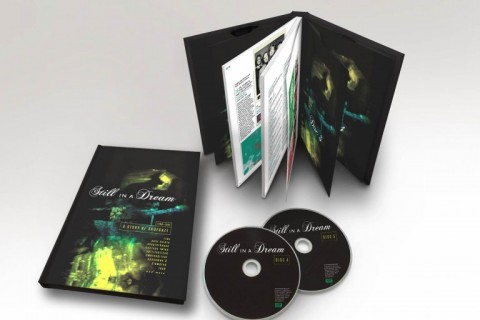
Does the box office, well cash register, success of one set help green light the next? What is success in this arena?
REED: Yes, success breeds success. Cherry Red has survived by finding the right balance between financial caution and enthusiastic creativity, I think. Success certainly requires a few thousand sales but it also depends on the level of investment of time, effort and money and whether, too, we all enjoyed it. The last point is important. If a project made everyone feel miserable, it’s unlikely we’d revisit it! But clearly, we are a business and the finances are the backbone.
ANDERSON: A few thousand sales justifies all off the effort and expenditure, certainly, and the audience we’re aiming at is perhaps a slightly older collectors’ market, people who want something nice to put on the shelf and which captures a particular scene in one handy place. Music historians too, I suppose — people who want to know the recording details and the equipment used. I also like to think these sets provide a doorway into new area for some customers — in an ideal world people will go out and buy other records based on things they discover on these compilations. On the other hand, some sets aim to be definitive — for example John and I worked together last year on Artifact: a Creation Records Origins’ type release, a 5CD set which was full of demos, BBC sessions and so on and really was the final word on the early years of the label.
DISC SEVEN: PACKAGING
Are you still searching for the perfect way to box 4-6 discs inside a book? Are the Cherry Red scientists still developing new ways of putting it all together?
REED: Heh heh, you may be right! Scared To Get Happy looked great but there was the niggle of how to get the discs out. That format works perfectly for four CDs, though.
ANDERSON: We have an extensive underground laboratory working round the clock on this problem and are sworn to secrecy!
REED: For Artifact and SIAD, we adopted a slightly different ”box set” idea with hanging wallets. For the Jah Wobble 6-CD, we used the traditional lift lid’ format. We’re always open to new formats and ideas, especially if the cost is attractive!
DISC EIGHT: PROMOTION
Have any tours or one-off shows resulted from these sets? Have any bands gotten back together due to the refreshed exposure?
ANDERSON: I know John has been involved in shows related to some of his compilations, and I’m currently looking at a Noise Floor event later this year. One of the artists works in an arts centre and is keen to do something, but the question is whether or not we dare take something so underground outside of London.
REED: Yes, we organized a mini-festival for Scared To Get Happy, with ten bands, which attracted 600 people. The Brilliant Corners reunited for that. We did a similar gig for C86.
DISC NINE: I’VE SEEN THE FUTURE AND IT WILL BE…
Richard now that you’ve bought this set to the finish line, what’s next for you?
ANDERSON: In an ideal world I’d love to do a Close to the Noise Floor Volume II, or perhaps a European, Japanese or American equivalent. Ultimately, though, it comes down to whether there’s an audience for this set. I sincerely hope so; I love this music and passionately believe the story of electronic music has been badly overlooked. We’re all well versed in the history of punk and the post-punk underground, and then suddenly the charts are full of new romantics and electropop and the 80s takes over. Music magazines never seem to tire of telling us those stories, but there’s really no context when it comes to the emergence of electronic music in the UK beyond the usual Warm Leatherette’ and Gary Numan route. For example, how many people are familiar with Zorch, who stake a good claim to being the UK’s first entirely electronic live band? Very few, sadly. So it’d be great if people choose to investigate, tell this story and give some of these artists their dues. On the same note, I’m interested to see whether the dance music press picks up on this release or whether it’s gone too far now to go back and revise the story. How can you tell people that house music didn’t originate entirely in Chicago — 5XOD were doing it in Bristol in 1981? I’m not sure the industry wants to hear it.
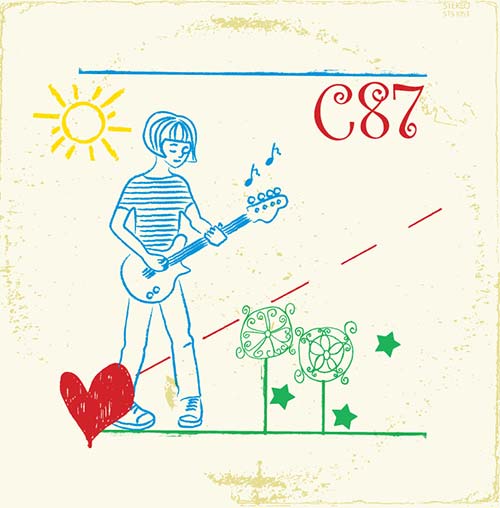
John, we’re eager to know how C87 is coming together. Was it fun to go back in time to architect the C87 compilation fans of C86 have been waiting close to 30 years for?
REED: C87 is now at manufacture. In a way, C87 compiled itself as the logical sequel to C86. The format was to introduce new bands (i.e. those who weren’t on the C86 3-CD) on Disc 1, as if the NME had compiled C87 a year later, then revisit the C86 bands across Discs 2 and 3, alongside other bands who came through in that 86/87 period. It was also nice to include tracks that had previously been on the subs bench, sometimes because we’d failed to track them down.
And as if that wasn’t enough, there’s this….
Discover more box sets, reissues and original albums at Cherry Red Records.





Comments